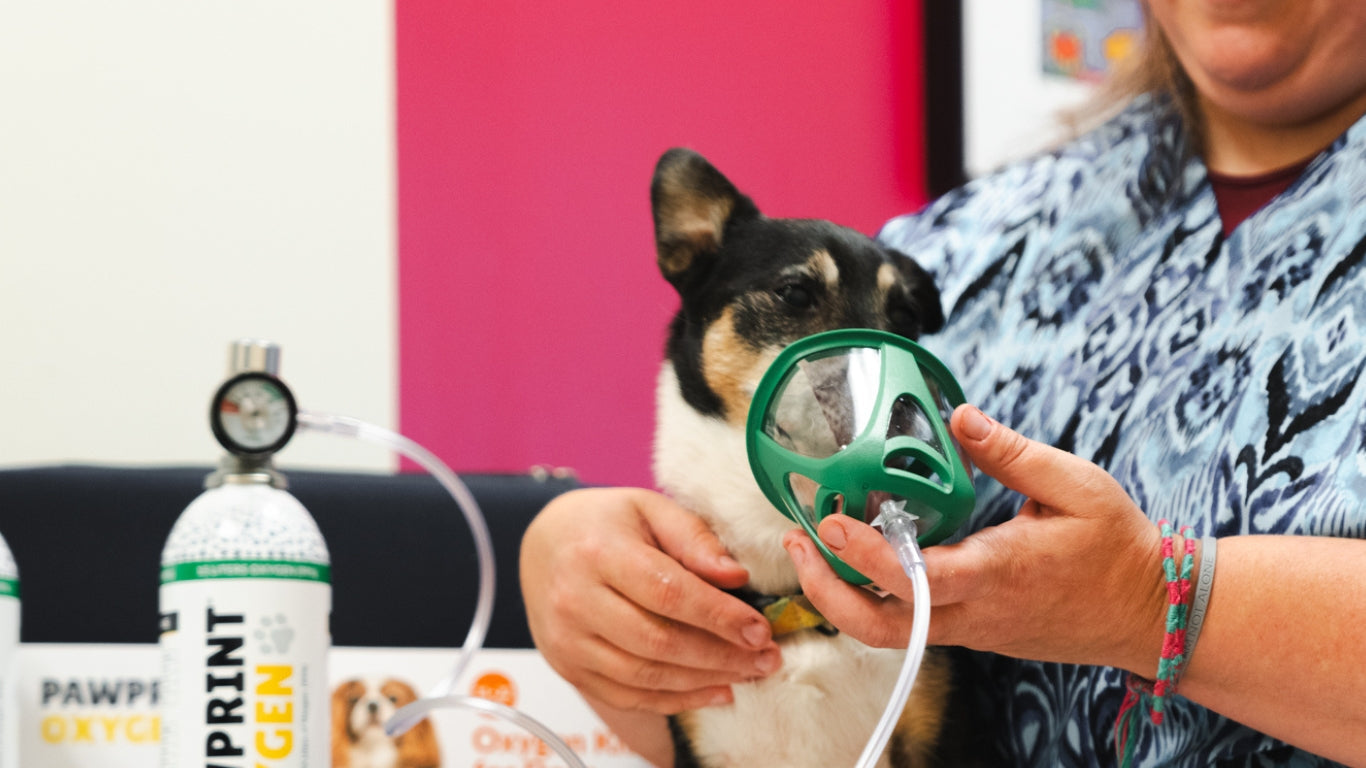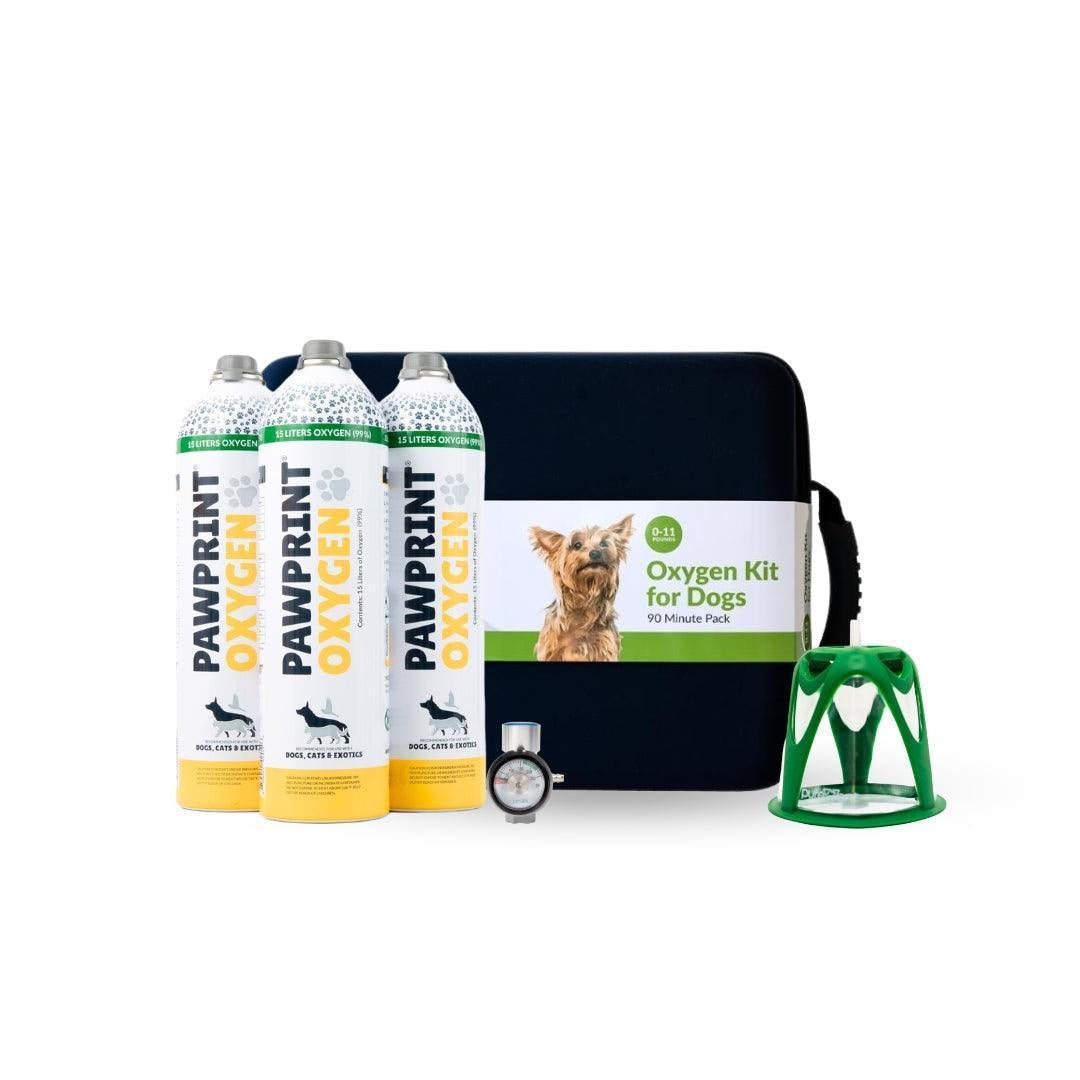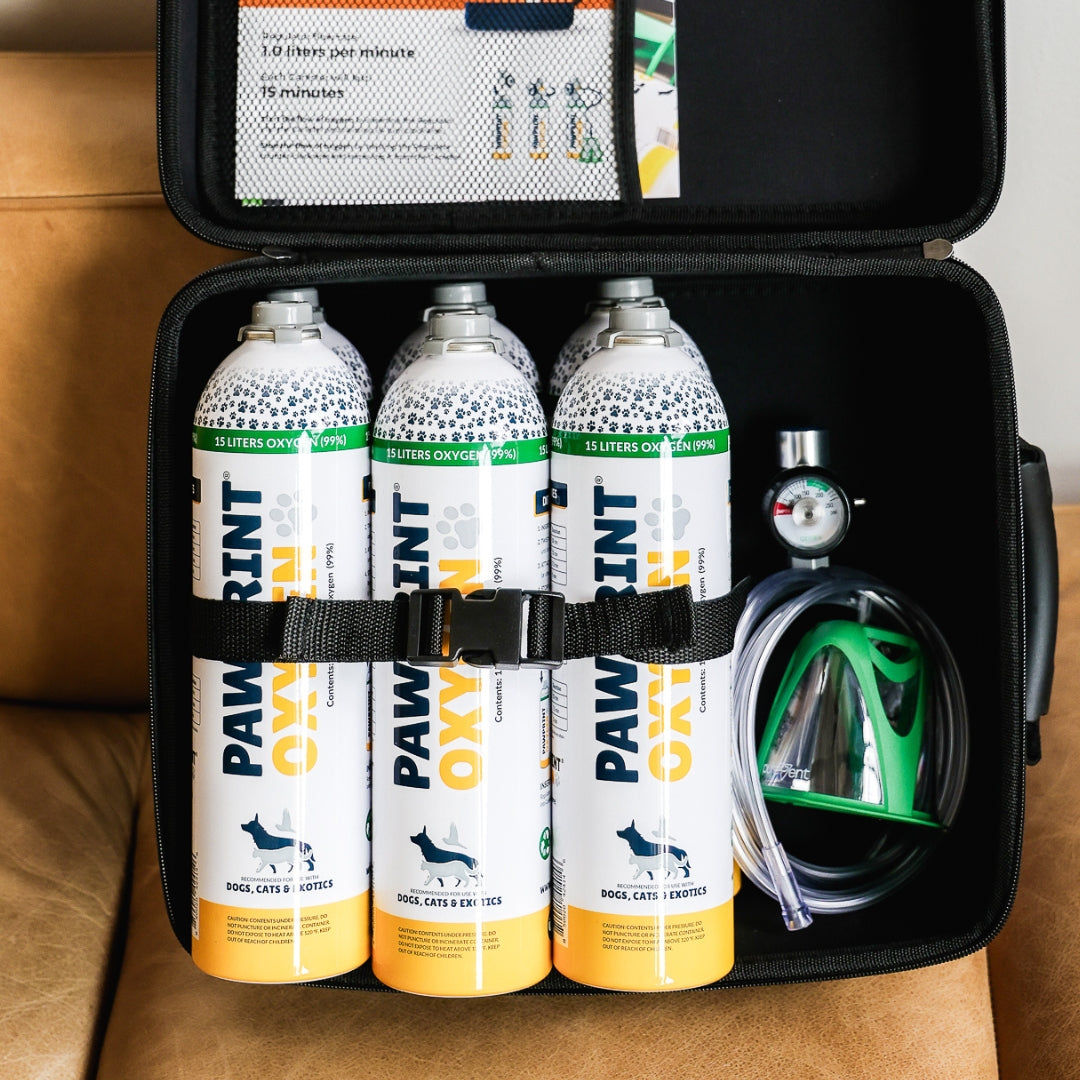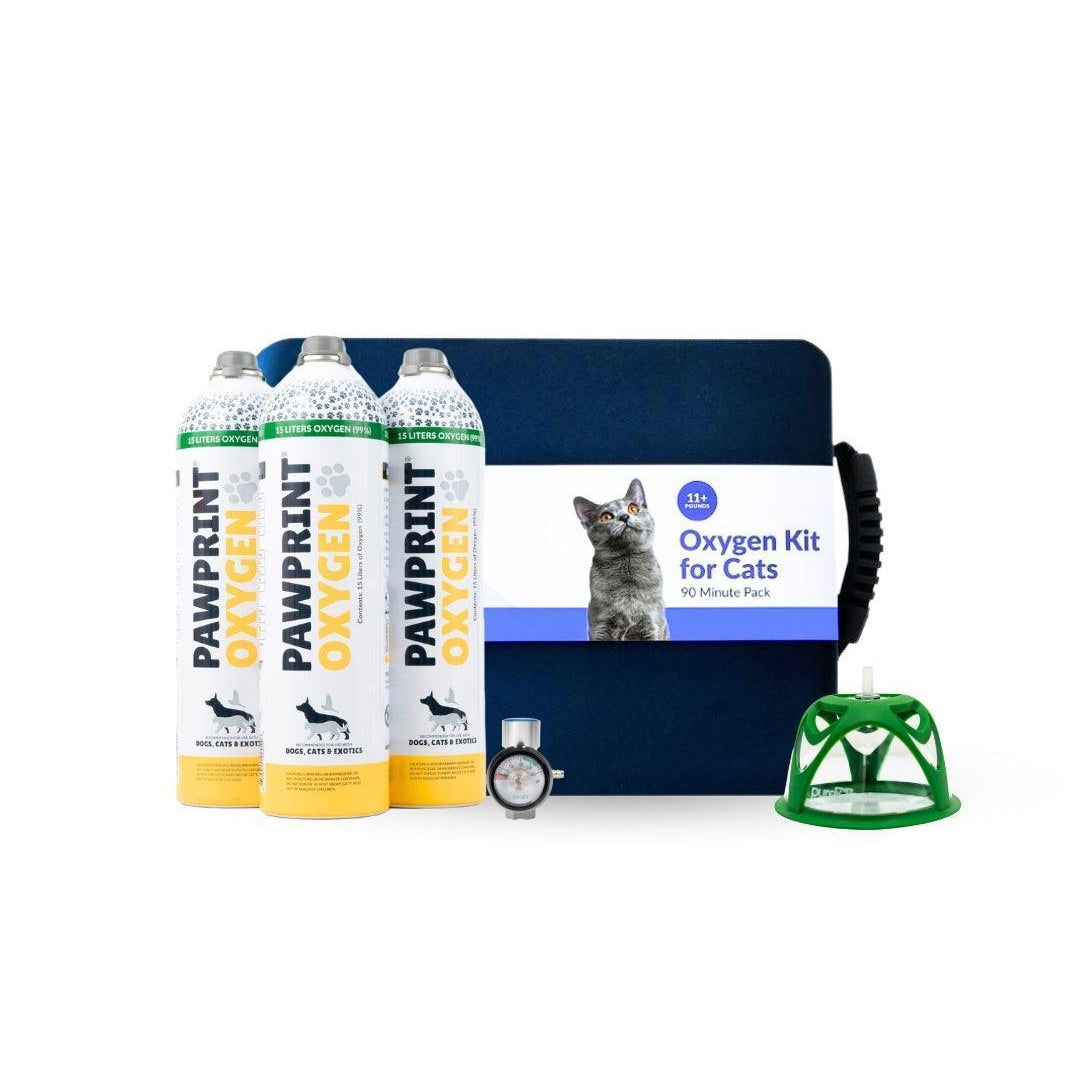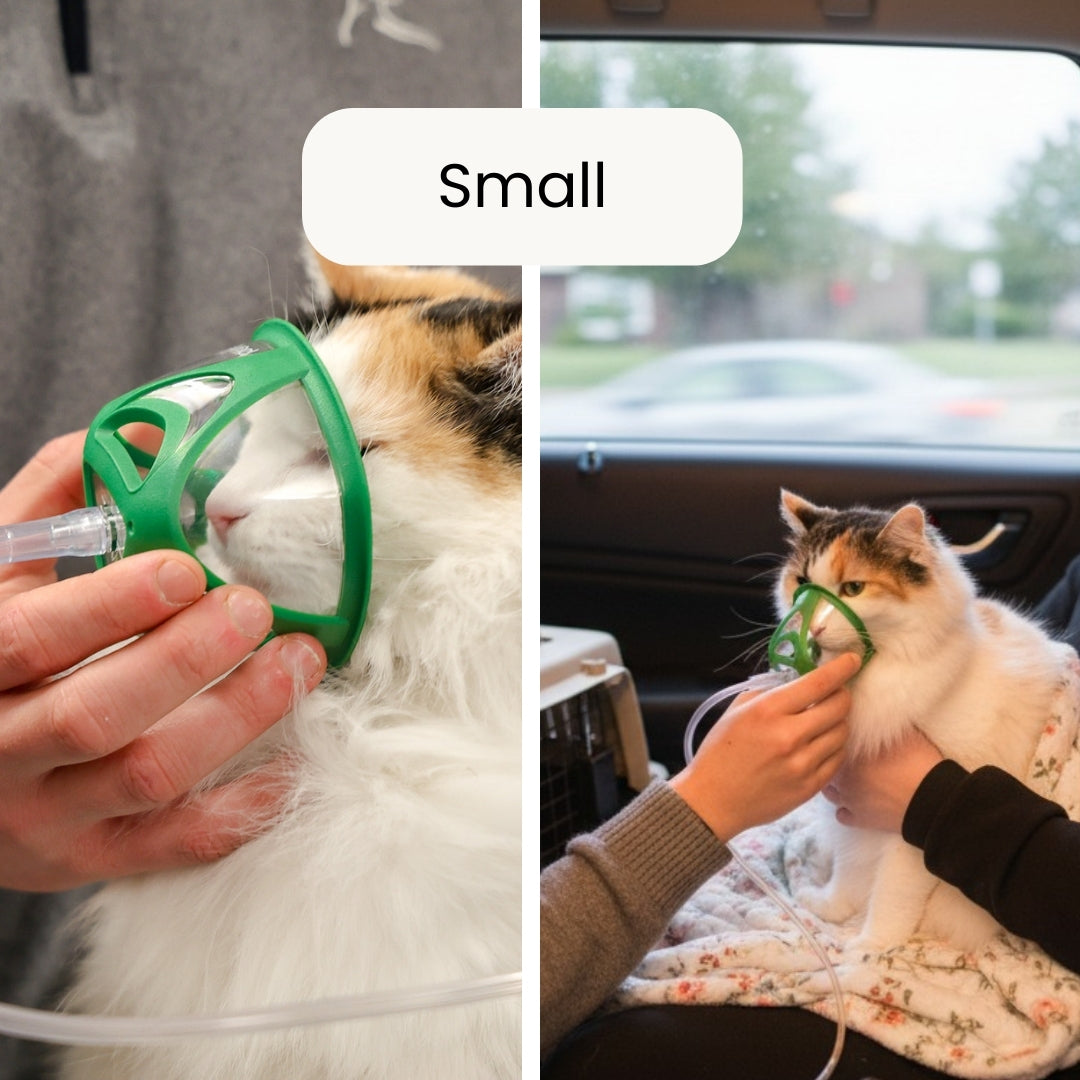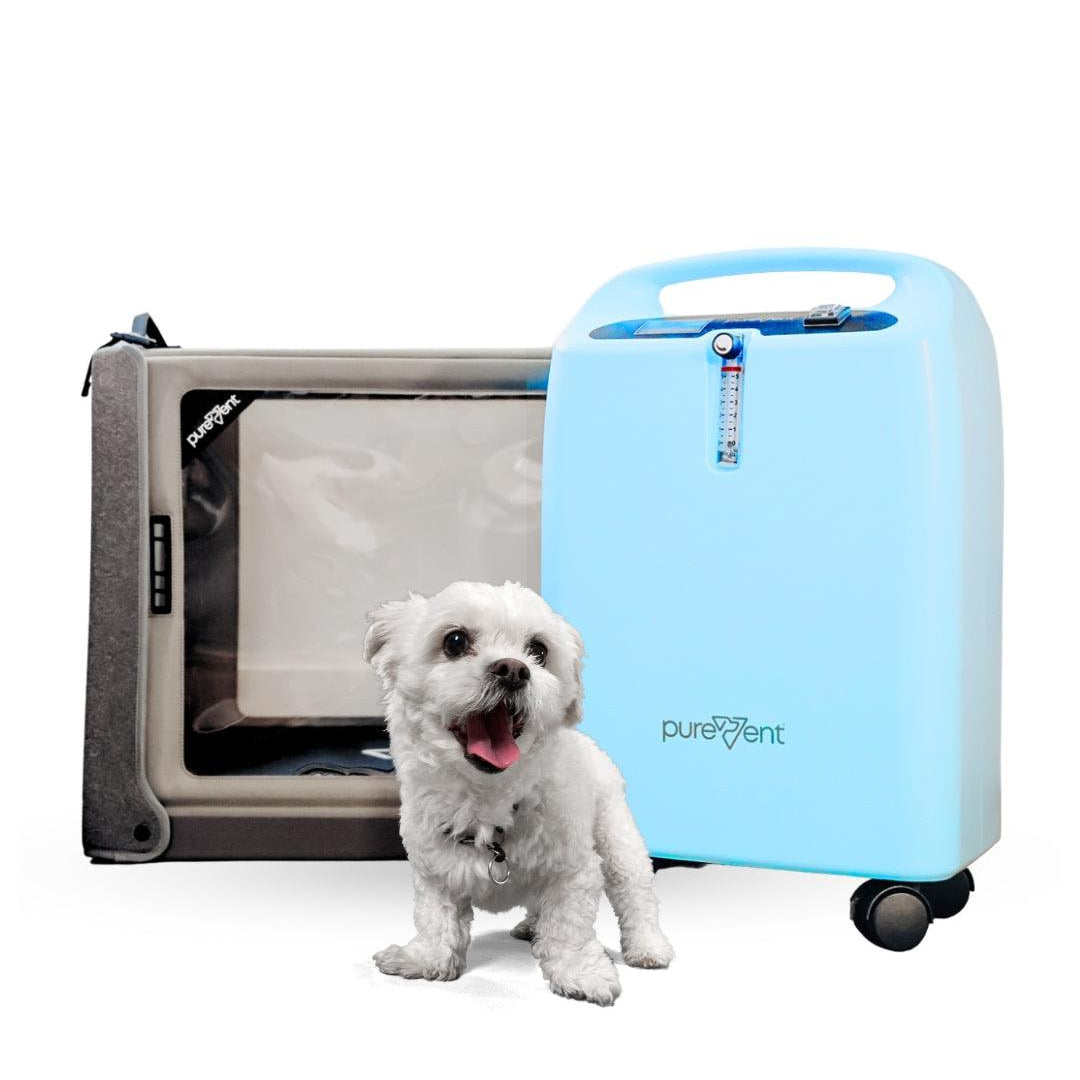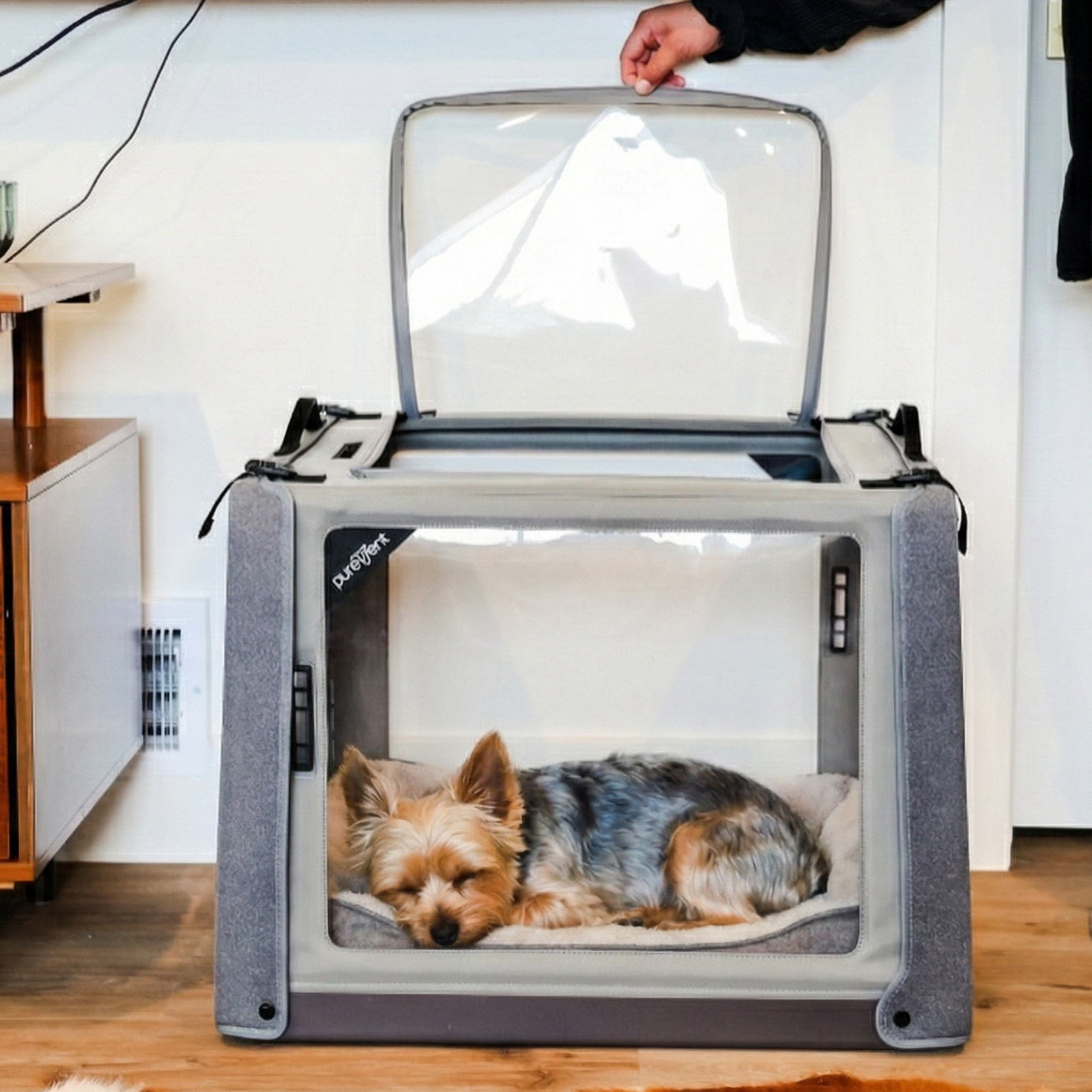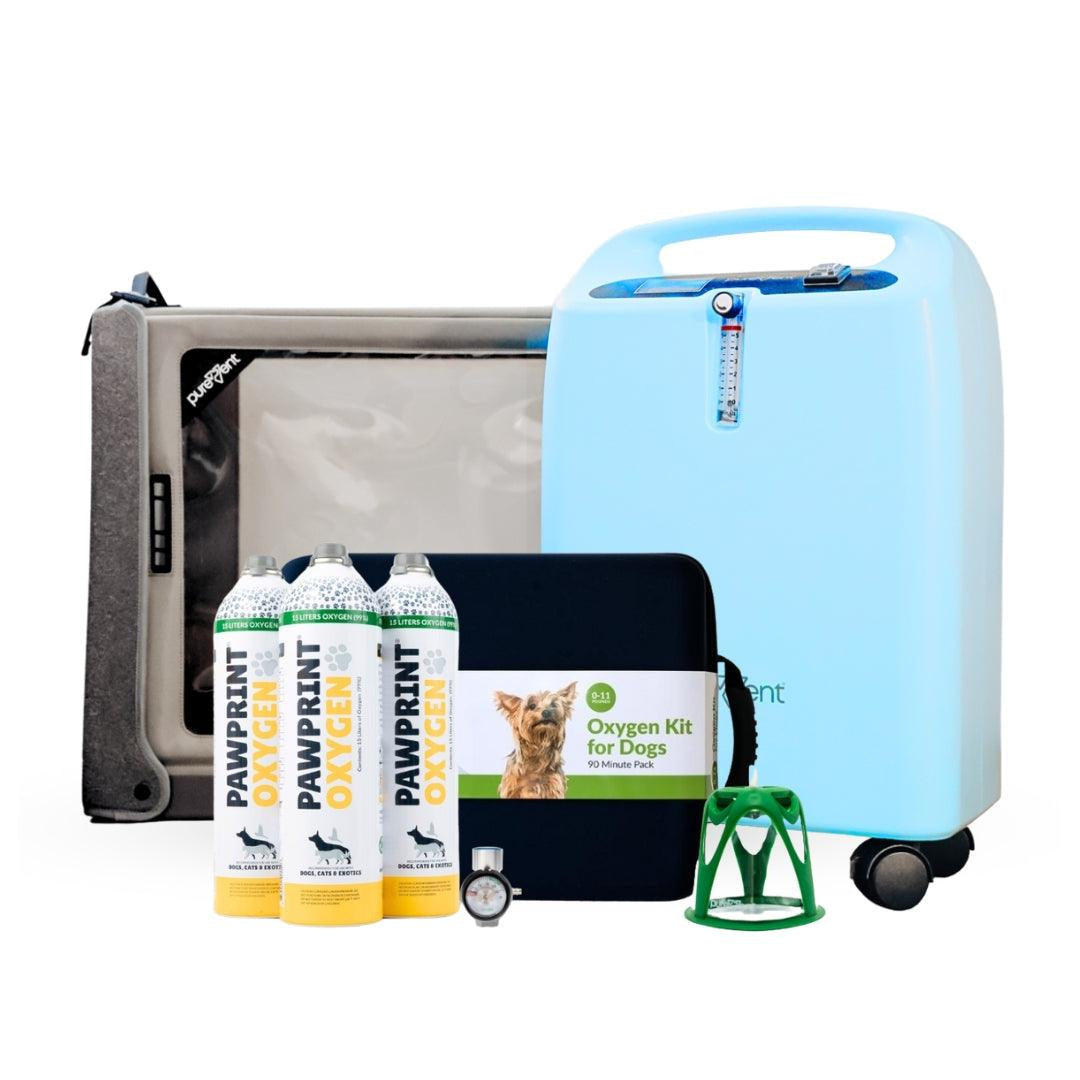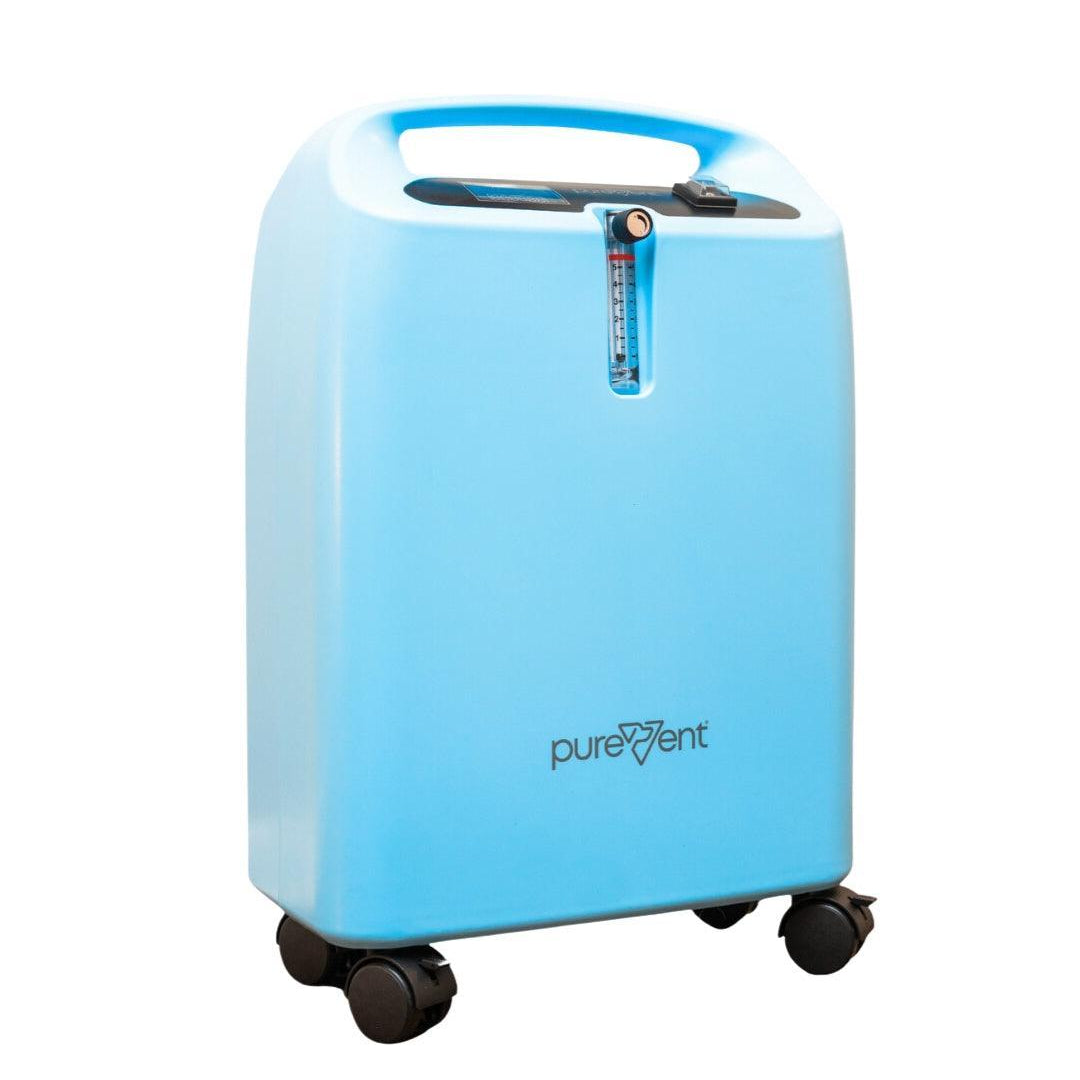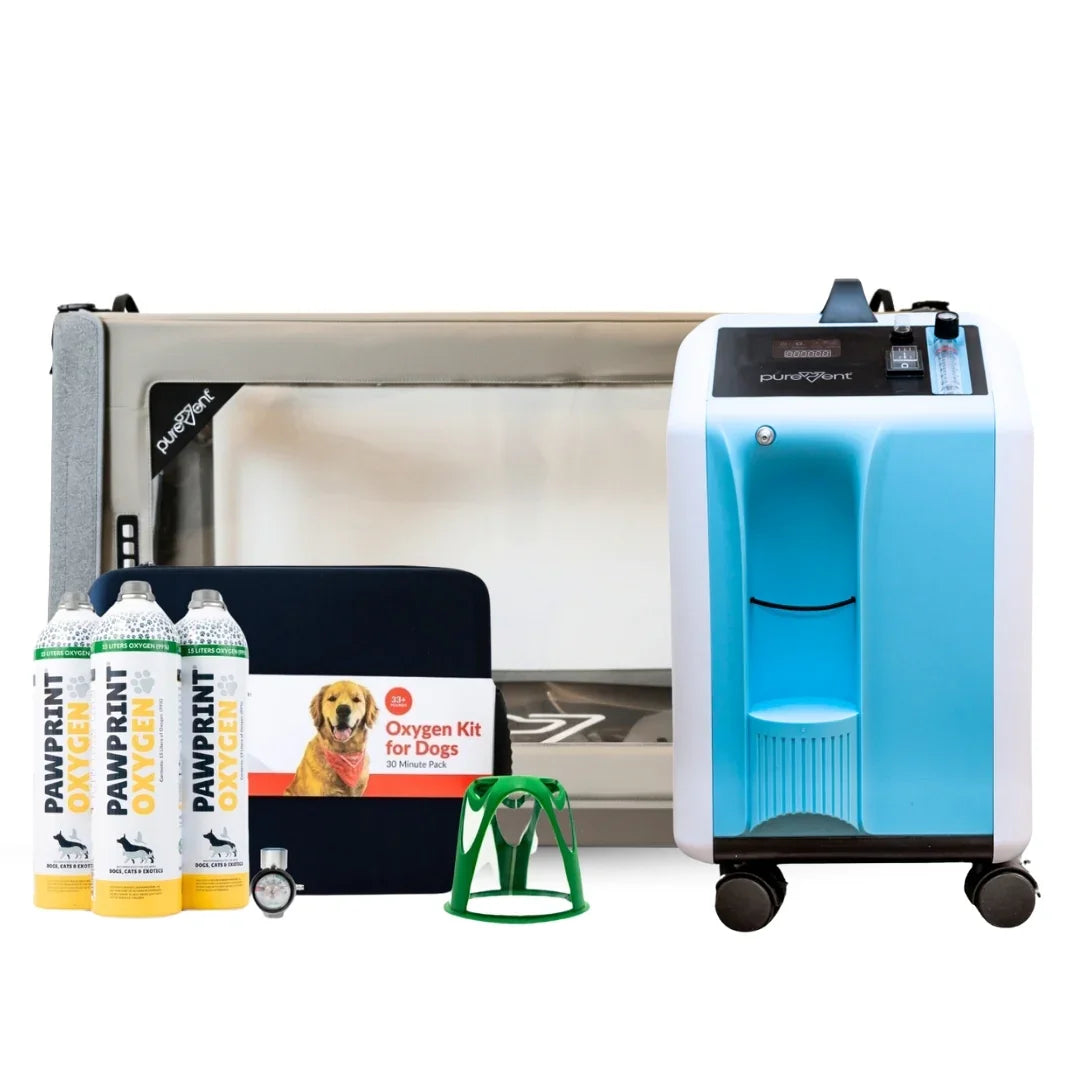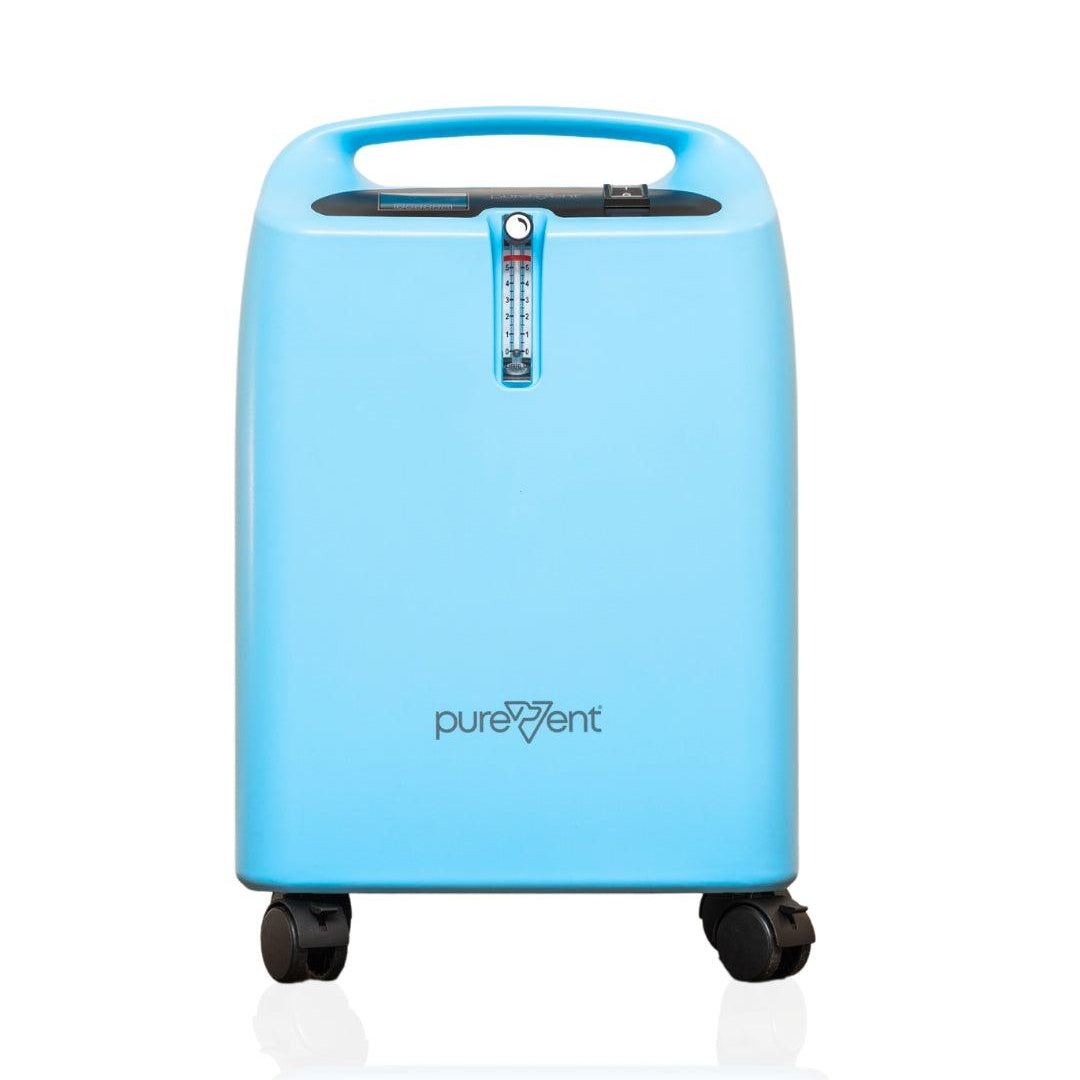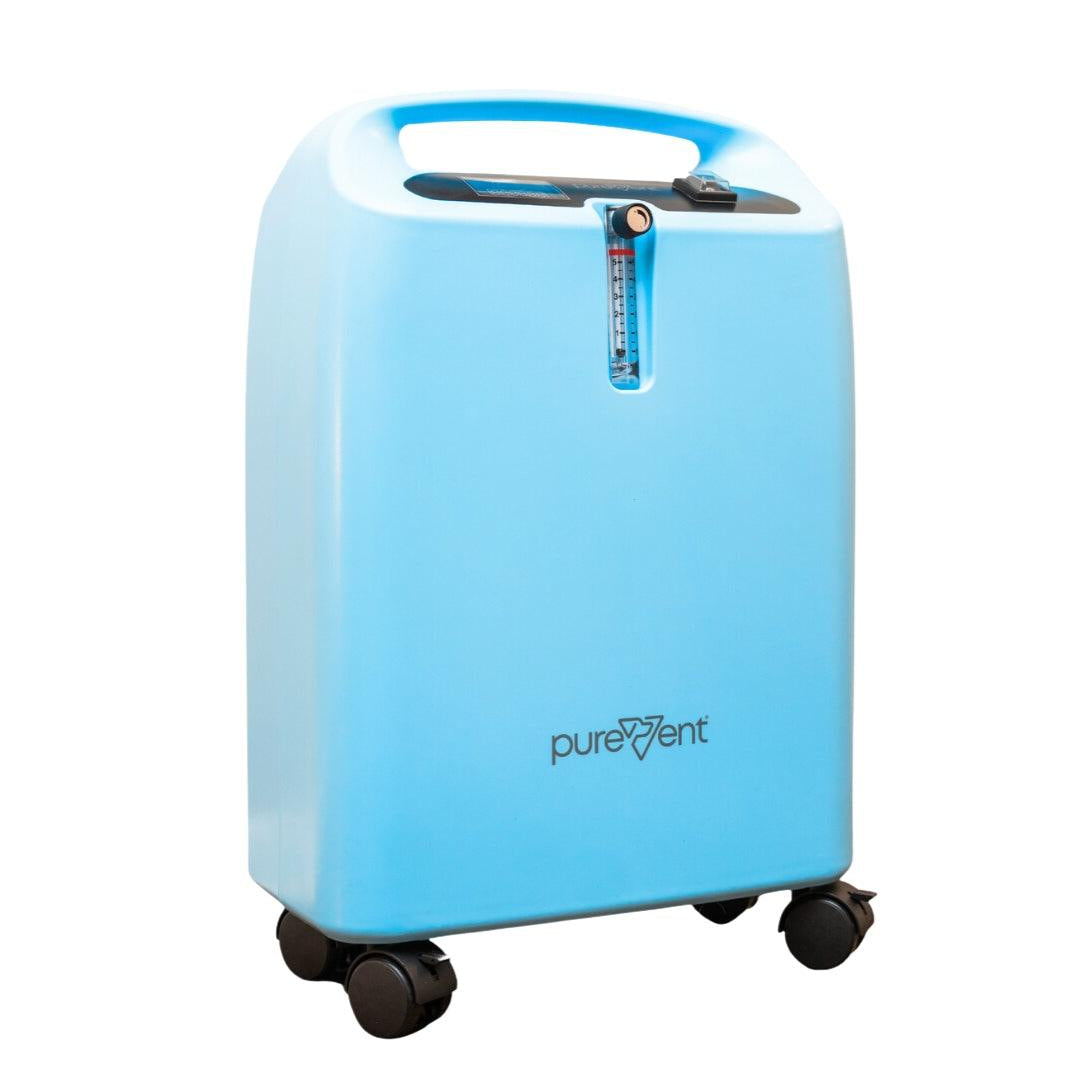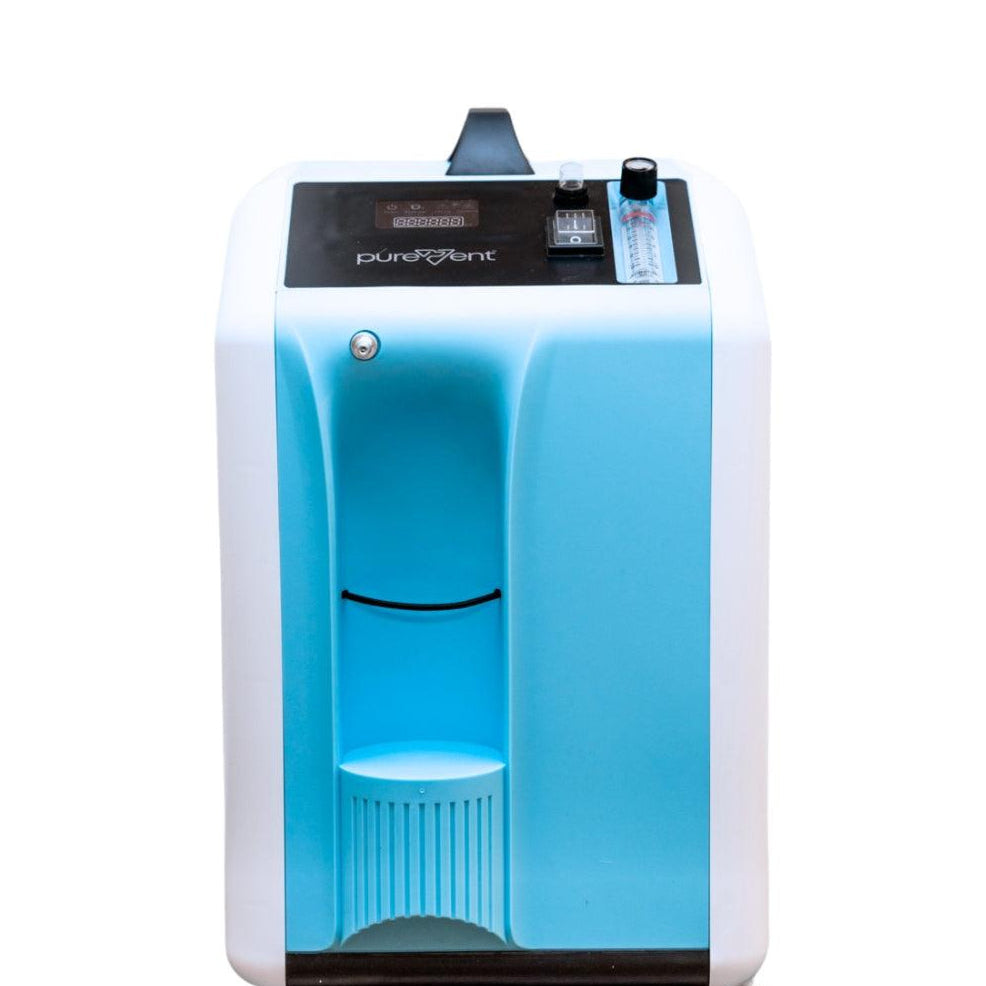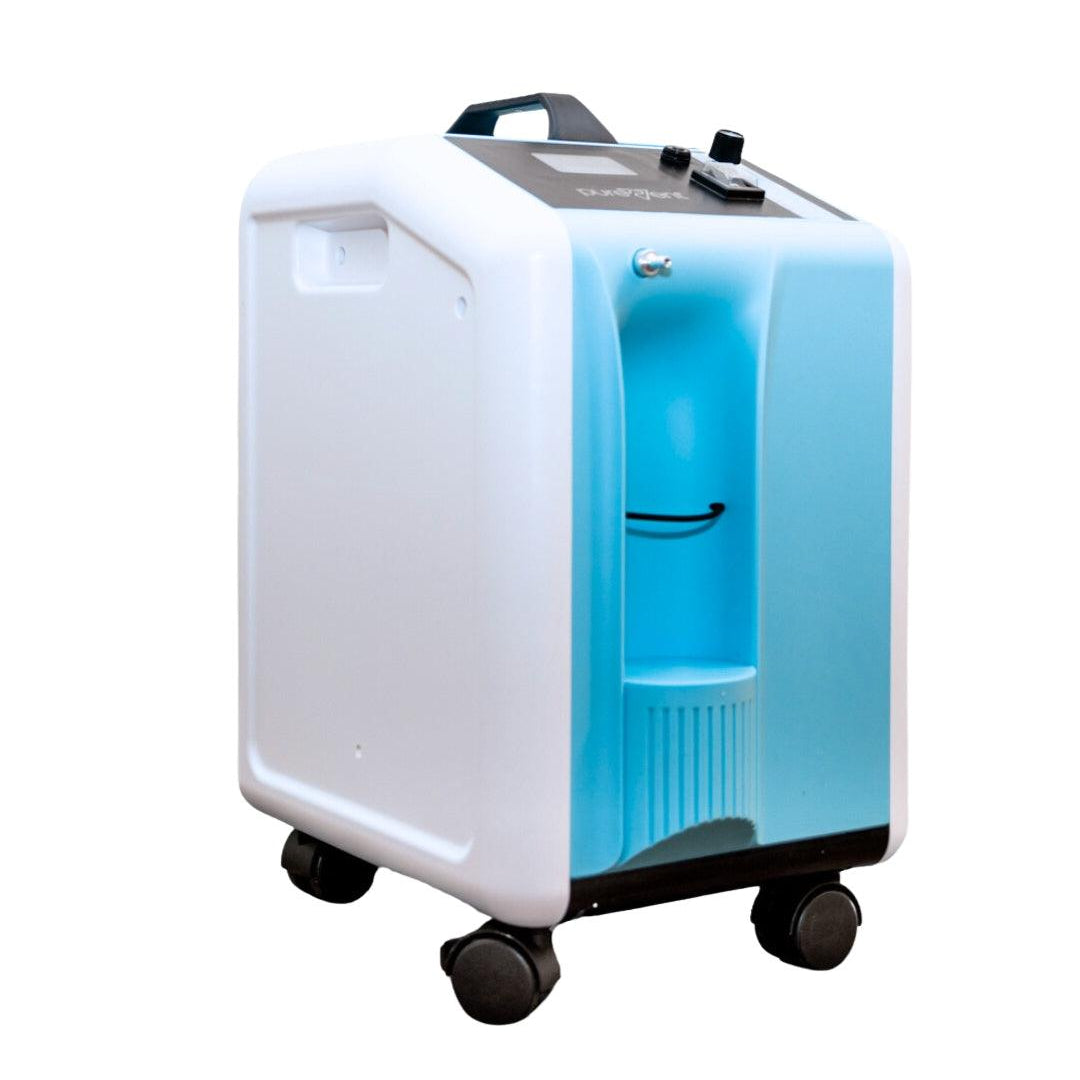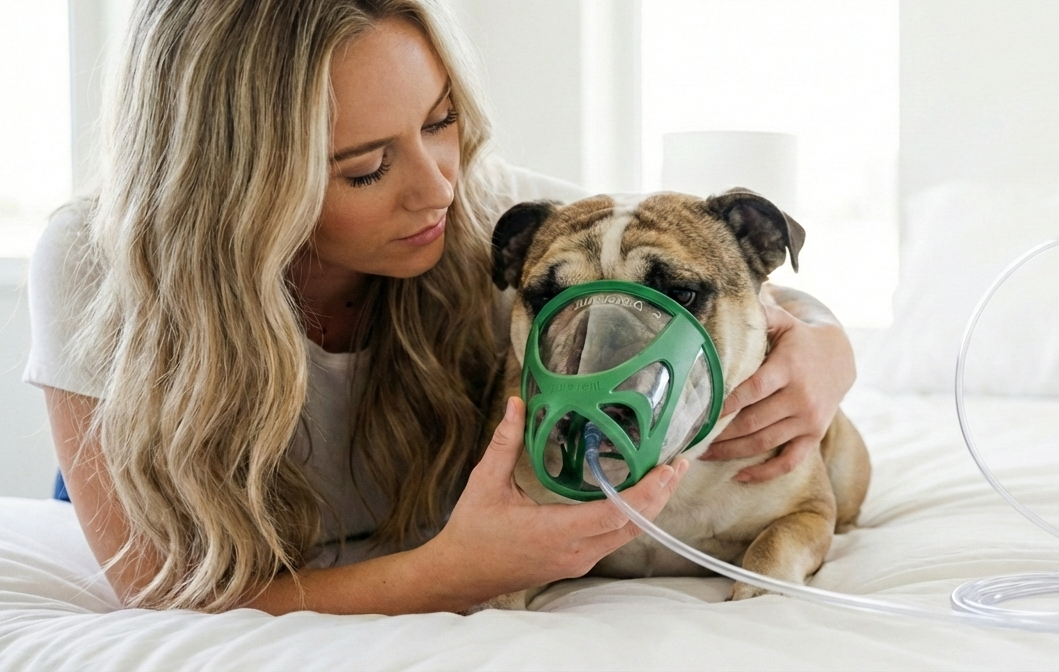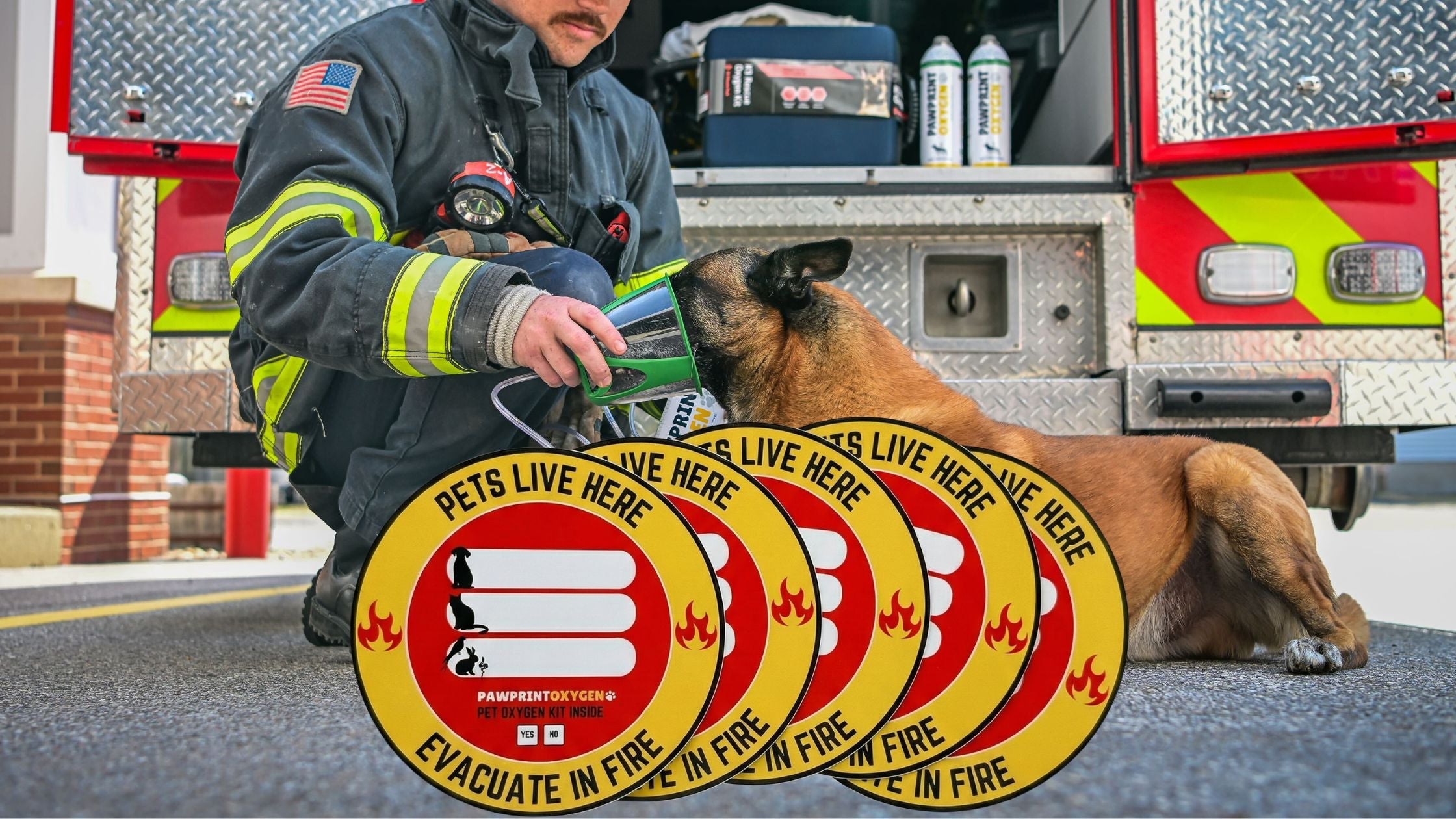A collapsed trachea is a condition that can cause significant discomfort and breathing difficulties for dogs. The trachea, or windpipe, is a crucial part of a dog's respiratory system, and when it weakens and collapses, it can lead to a distinctive honking cough, labored breathing, and other distressing symptoms. This condition is particularly common in small dog breeds, but it can affect dogs of any size.
Recognizing the signs of a collapsed trachea early on is essential for managing the condition effectively. Early intervention can help prevent the situation from worsening and improve your dog’s quality of life. In this article, we’ll explore practical tips and strategies to soothe and manage a dog suffering from a collapsed trachea. Whether you’re dealing with this condition for the first time or looking for new ways to provide relief, these insights will help you support your dog’s well-being.
Table of Contents

Understanding Collapsed Trachea in Dogs
Collapsed trachea in dogs is a condition where the tracheal rings, which are typically firm and supportive, lose their rigidity, causing the trachea to become flattened. This results in a partially or fully obstructed airway, making it difficult for your dog to breathe. The trachea, or windpipe, is the tube that carries air from the nose and mouth into the lungs. When it collapses, it’s akin to trying to breathe through a straw that is being pinched.
There are several factors that can contribute to the development of a collapsed trachea in dogs. Some of the most common causes and risk factors include:
Breed Predisposition:
Small and toy breeds, such as Yorkshire Terriers, Pomeranians, Chihuahuas, and Pugs, are more prone to tracheal collapse. This condition is often congenital in these breeds, meaning they are born with a predisposition to the problem.
Obesity:
Excess body weight can put additional pressure on the trachea, exacerbating the collapse. Obese dogs are at a higher risk of developing respiratory issues, including tracheal collapse.
Chronic Respiratory Issues:
Dogs with long-standing respiratory problems, such as chronic bronchitis or severe allergies, may experience irritation and inflammation in the trachea. Over time, this can weaken the tracheal rings and lead to collapse.
Age:
Although tracheal collapse can occur at any age, it is more common in middle-aged to senior dogs. As dogs age, their tracheal cartilage may naturally weaken, increasing the risk of collapse.
Environmental Factors:
Exposure to irritants such as cigarette smoke, dust, or air pollution can aggravate the respiratory system and contribute to the weakening of the trachea.
Symptoms to Watch For
Recognizing the symptoms of a collapsed trachea is crucial for early intervention and management. The most common signs that a dog may be suffering from this condition include:
Honking Cough:
This is the hallmark symptom of tracheal collapse. The cough is often described as sounding like a goose honk and can be triggered by excitement, pressure on the trachea (such as pulling on a collar), or exercise.
Difficulty Breathing:
Dogs with a collapsed trachea may struggle to breathe, especially during exercise or periods of stress. You might notice your dog wheezing or having a labored breathing pattern.
Exercise Intolerance:
Dogs with tracheal collapse often have reduced stamina. They may tire easily and show reluctance to engage in physical activity, particularly if it triggers coughing or breathing difficulties.
Gagging or Retching:
Some dogs with this condition may gag or retch, particularly after eating, drinking, or during periods of excitement.
Bluish Gums:
In severe cases, the lack of oxygen caused by a collapsed trachea can lead to cyanosis, where the gums and tongue take on a bluish tint. This is a sign of significant respiratory distress and requires immediate veterinary attention.
Abnormal Breathing Sounds:
You may hear abnormal breathing sounds, such as wheezing or stridor (a high-pitched noise), when your dog is breathing.

Immediate Steps to Soothe a Dog with Collapsed Trachea
When caring for a dog with a collapsed trachea, it’s important to take immediate steps to alleviate discomfort and prevent the condition from worsening. By making some simple adjustments to your dog’s environment, lifestyle, and daily routines, you can help soothe their symptoms and improve their quality of life. Keep reading for some practical tips to soothe your dog’s symptoms.
Creating a Calm Environment
One of the most important steps in soothing a dog with a collapsed trachea is to maintain a calm and stress-free environment. Stress and anxiety can exacerbate the symptoms of tracheal collapse, particularly the characteristic honking cough. When a dog is anxious or excited, their breathing rate increases, which can put additional strain on the already compromised trachea.
To help reduce your dog's stress levels:
Minimize Excitement:
Try to keep your dog's environment as quiet and predictable as possible. Avoid situations that may cause excessive excitement, such as loud noises, vigorous play, or sudden changes in routine.
Comforting Space:
Create a dedicated quiet area in your home where your dog can retreat and relax. This space should be free from loud noises, other pets, and distractions. Soft bedding, dim lighting, and a familiar toy or blanket can help make this space more comforting.
Use of Calming Aids:
Consider using natural calming aids such as pheromone diffusers, calming collars, or anxiety wraps. These products can help soothe your dog and reduce anxiety, which in turn may lessen the severity of their symptoms.
Providing Cooling Measures
Heat and humidity can aggravate breathing difficulties in dogs with a collapsed trachea. Keeping your dog cool and comfortable is essential to prevent worsening of the condition.
Fans and Air Conditioning:
Ensure that your dog has access to a cool environment, especially during hot weather. Use fans or air conditioning to maintain a comfortable temperature. A cool breeze can help ease breathing and prevent overheating.
Avoid Overexertion:
During warmer months, limit your dog’s activity to cooler parts of the day, such as early morning or late evening. Avoid walking your dog during peak heat hours, and always have water available to keep them hydrated.
Cool, Shaded Areas:
If your dog spends time outdoors, make sure they have access to shaded areas where they can rest and cool down. Consider placing a cooling mat or damp towel in their resting spot to help them stay cool.
Are there any natural treatments that help with a collapsed trachea in dogs?
Yes, there are several natural treatments and home remedies that can help manage a collapsed trachea in dogs. While these remedies won’t cure the condition, they can help reduce symptoms like coughing, inflammation, and airway irritation. Here are some options:
1. Weight Management
- Why it helps: Extra weight puts more pressure on the trachea and worsens breathing difficulties.
- What to do: Keep your dog at a healthy weight with a balanced diet and portion control . Avoid high-calorie treats and opt for fresh vegetables like carrots or green beans.
2. Anti-Inflammatory Supplements
- Why it helps: Reducing inflammation in the trachea can ease breathing and lessen coughing.
-
Natural options:
- Turmeric – Contains curcumin, a natural anti-inflammatory. Mix a small amount into your dog’s food.
- Omega-3 fatty acids – Found in fish oil, these help reduce inflammation in the airways.
3. Honey and Herbal Remedies
- Why it helps: Honey coats the throat and may help soothe irritation, reducing coughing.
-
How to use:
- Give ½ to 1 teaspoon of raw honey up to three times daily.
- Look for honey-based herbal cough syrups with marshmallow root or slippery elm, both of which can ease throat irritation.
4. Humidifier or Steam Therapy
- Why it helps: Dry air can irritate the trachea and trigger coughing.
-
What to do:
- Use a humidifier in your dog’s sleeping area.
- Let your dog sit in a steamy bathroom for a few minutes while you run a hot shower.
5. Avoid Triggers That Worsen Coughing
-
Irritants to remove:
- Smoke (cigarette, fireplace, candles)
- Strong perfumes or air fresheners
- Household cleaners with strong fumes
6. Switching to a Harness
- Why it helps: Collars put pressure on the trachea and can make symptoms worse.
- What to do: Use a soft, padded harness instead of a collar to reduce throat strain.
7. Acupuncture and Chiropractic Care
- Why it helps: Some pet owners find that acupuncture or chiropractic adjustments improve airway function and reduce coughing.
- What to do: Seek out a licensed veterinary acupuncturist or chiropractor for guidance.
8. Oxygen Therapy at Home
- Why it helps: Providing supplemental oxygen can relieve respiratory distress during flare-ups.
- What to do: Consider portable oxygen canisters or an oxygen concentrator to have on hand for emergencies.
How can I prevent my dog from having a coughing fit from a collapsed trachea?
Preventing coughing fits in dogs with collapsed trachea requires a combination of lifestyle changes, environmental management, and supportive care . Here are some effective ways to minimize coughing episodes:
1. Minimize Tracheal Irritation
- Switch to a Harness: A collar puts pressure on the trachea and can trigger coughing. Use a soft, padded harness to reduce strain on the throat.
- Keep Your Dog Calm: Excitement or stress can lead to excessive barking or panting , which worsens coughing. Try to avoid situations that overstimulate your dog.
- Control Barking: If barking triggers coughing, use positive reinforcement training or a white noise machine to reduce triggers like outside noises.
2. Maintain a Healthy Weight
- Why it helps: Excess weight puts pressure on the trachea, making breathing harder.
- How to manage: Feed a balanced, portion-controlled diet and ensure light, low-impact exercise (like short walks).
3. Keep the Air Clean and Moisturized
- Use a Humidifier: Dry air can irritate the trachea, so keep a humidifier in your dog’s living space.
-
Avoid Irritants:
- No smoke exposure (cigarette, fireplace, candles).
- No strong perfumes, air fresheners, or household cleaners.
4. Provide Natural Soothing Remedies
- Honey: A small amount of raw honey (½ to 1 teaspoon) up to 3 times daily can help soothe the throat.
- Herbal Support: Look for natural cough syrups containing marshmallow root or slippery elm to ease airway irritation.
5. Control Temperature and Exercise
- Avoid Hot, Humid Weather: Heat and humidity can make breathing more difficult. Walk your dog during cooler parts of the day.
- No Overexertion: Keep exercise light—short walks instead of high-intensity play.
6. Use Oxygen Therapy During Flare-Ups
- Why it helps: Extra oxygen can reduce the strain on the airways and help your dog breathe more easily.
- What to do: Keep portable oxygen canisters or an oxygen concentrator on hand for emergencies.
7. Medications and Veterinary Support
- Cough Suppressants: If coughing is severe, your vet may prescribe hydrocodone or butorphanol to reduce symptoms.
- Anti-Inflammatories: Steroids (prednisone) or natural options like turmeric can reduce swelling in the trachea.
By implementing these strategies, you can reduce the frequency and severity of coughing fits and improve your dog’s quality of life.
Can a collapsed trachea get better, or will it worsen over time?
A collapsed trachea is a progressive condition, meaning it does not fully heal on its own and can worsen over time if not properly managed. However, with the right treatment, lifestyle adjustments, and medical support , many dogs can maintain a good quality of life and experience fewer symptoms.
Will a Collapsed Trachea Get Better?
- The trachea itself cannot regenerate or return to normal once it has collapsed.
- However, symptoms can improve with proper management, medications, and environmental adjustments .
- Dogs with mild to moderate cases can live comfortably with weight control, cough suppressants, anti-inflammatories, oxygen therapy, and trigger avoidance .
Can It Get Worse Over Time?
- Yes, the condition can progress , especially in senior dogs or those with severe tracheal collapse .
- Repeated inflammation and coughing can weaken the tracheal rings further, making breathing more difficult over time.
- If left unmanaged, a collapsed trachea can lead to chronic respiratory distress, frequent infections, or secondary complications like heart disease .
How to Slow Progression and Improve Comfort
- Maintain a Healthy Weight: Reduces pressure on the trachea.
- Avoid Triggers: Keep your dog away from smoke, dust, and excessive barking.
- Use a Harness: Prevents additional strain on the trachea.
- Provide Oxygen Therapy as Needed: Helps during flare-ups.
- Consider Medications or Surgery (in Severe Cases): Your vet may recommend cough suppressants, bronchodilators, or even stent placement in advanced cases.
What’s the Long-Term Outlook?
- Many dogs with mild to moderate cases can live comfortably for years with proper management .
- Dogs with severe tracheal collapse may need intensive care, oxygen therapy, or surgical intervention to maintain quality of life.
Elevating Body Position
Proper body positioning can make a significant difference in alleviating the symptoms of a collapsed trachea. The goal is to reduce pressure on the trachea and make breathing easier.
Use a Harness Instead of a Collar:
Collars, especially those that are tight or put pressure on the neck, can exacerbate tracheal collapse. Switch to a harness that distributes pressure across the chest and avoids placing strain on the throat. A well-fitted harness is crucial for dogs with this condition.
Elevate Food and Water Bowls:
Raising your dog’s food and water bowls can help reduce the strain on their neck while eating or drinking. Elevated bowls encourage a more natural head position, which can minimize coughing and make swallowing easier.
Supportive Resting Positions:
Encourage your dog to rest in a position that promotes easy breathing. For some dogs, lying on their side with their neck slightly extended can be more comfortable. You can also use pillows or rolled-up blankets to prop up your dog's head and upper body.
Provide Supplemental Oxygen Therapy
When a dog with collapsed trachea experiences a breathing episode, their airway becomes partially obstructed, making it difficult for them to get enough oxygen. These episodes can be triggered by excitement, stress, heat, or exertion, and they often present as a honking cough, wheezing, or labored breathing. In severe cases, a dog may show signs of cyanosis (blue gums) due to lack of oxygen. Providing at-home oxygen therapy during these episodes can help relieve respiratory distress and stabilize your pet.
Create a Calm Environment: Before administering oxygen, reduce stress by moving your dog to a quiet, cool area. Excitement or anxiety can worsen symptoms, so speak softly and avoid sudden movements. If possible, keep your dog in a standing or sitting position to help them breathe more easily.
Administer Oxygen Therapy: If you have an oxygen concentrator at home, you can deliver oxygen in one of the following ways:
- Oxygen Mask: A pet oxygen mask designed to fit snugly around your dog’s muzzle is the most effective method. Secure the mask gently and allow them to breathe in the oxygen for several minutes.
- Oxygen Chamber: If your dog is too anxious for a mask, placing them in an oxygen chamber (like the PureVent Pet Oxygen Chamber) can provide continuous oxygen flow without direct contact.
- Flow-by Oxygen: If your dog won’t tolerate a mask, you can hold the oxygen tubing a few inches away from their nose to allow them to inhale supplemental oxygen indirectly.
For mild episodes, administering oxygen for 5–10 minutes may help stabilize breathing. More severe cases may require longer durations or veterinary intervention.
Monitor Your Dog’s Symptoms: Watch for signs that your dog is responding to oxygen therapy, such as less labored breathing, reduced coughing, and improved gum color. If symptoms persist or worsen, or if your dog becomes unresponsive, seek emergency veterinary care immediately.
Prevent Future Episodes: To reduce the frequency and severity of breathing episodes, consider lifestyle adjustments such as avoiding triggers (heat, excitement, pulling on a collar), using a harness instead of a collar, maintaining a healthy weight, and keeping your home air quality clean. Your veterinarian may also prescribe medications like cough suppressants, bronchodilators, or anti-inflammatories to help manage the condition.
At-home oxygen therapy is a valuable tool in supporting dogs with collapsed trachea, providing quick relief during respiratory distress and improving their overall comfort. Having an oxygen setup ready can give you peace of mind and help your pet breathe easier when they need it most.
At-home Oxygen Therapy Options:
-
Oxygen Concentrators: An oxygen concentrator is a device that provides a continuous flow of oxygen-enriched air, which can be particularly beneficial during episodes of severe respiratory distress. These units can be used at home under the guidance of your veterinarian, providing your dog with much-needed oxygen when they struggle to breathe.
- Portable Oxygen Canisters: For dogs who may experience sudden breathing difficulties, portable oxygen canisters can be a critical tool to help. These small, lightweight canisters allow you to administer oxygen to your dog when needed, whether at home or on the go.
Long-Term Management for Dogs with Collapsed Trachea
Managing a dog with a collapsed trachea requires a comprehensive approach that includes both medical treatments and lifestyle adjustments. By working closely with your veterinarian and making thoughtful changes to your dog’s daily routine, you can help manage the condition and improve your dog's comfort and quality of life over the long term.
For many dogs with a collapsed trachea, long-term management includes the use of medications and, in some cases, at-home oxygen therapy. These treatments aim to alleviate symptoms, reduce inflammation, and support better breathing.
Commonly Prescribed Medications for Collapsed Trachea
-
Bronchodilators: These medications help to open the airways, making it easier for your dog to breathe. They relax the muscles around the airways, which can reduce coughing and improve airflow.
-
Anti-inflammatories: Inflammation of the trachea can worsen the symptoms of a collapsed trachea. Anti-inflammatory medications, such as corticosteroids, can help reduce this inflammation, easing the pressure on the trachea and improving breathing.
- Cough Suppressants: In some cases, a veterinarian may prescribe cough suppressants to reduce the frequency and severity of coughing. This can be particularly helpful if the coughing is causing additional irritation to the trachea.

Lifestyle Adjustments
In addition to medical treatments, making certain lifestyle changes can greatly benefit a dog with a collapsed trachea. These adjustments are aimed at minimizing triggers and supporting overall health.
Gentle Exercise Routines
Regular exercise is important for maintaining your dog’s overall health, but it’s crucial to keep activities gentle and low impact. Short walks in cool weather, slow-paced games, and indoor play can help keep your dog active without overtaxing their respiratory system. Always monitor your dog for signs of fatigue or breathing difficulty during exercise and adjust the intensity as needed.
Avoiding Triggers
Certain environmental factors can exacerbate the symptoms of a collapsed trachea, so it’s important to identify and avoid these triggers.
- Smoke: Exposure to cigarette smoke or other forms of smoke can irritate the respiratory system, worsening coughing and breathing difficulties. Ensure that your dog is in a smoke-free environment.
- Dust and Allergens: Keep your home as dust-free as possible by regularly cleaning and vacuuming. Consider using air purifiers to reduce airborne allergens that could irritate your dog’s airways. If your dog is allergic to certain substances, work with your veterinarian to manage these allergies effectively.
- Temperature and Humidity: As previously mentioned, hot and humid environments can make breathing more difficult for dogs with a collapsed trachea. Keep your dog in a cool, well-ventilated space and avoid outdoor activities during extreme weather conditions.
Managing Your Dog's Weight
Maintaining an ideal body weight is crucial for dogs with tracheal collapse. Excess weight can put additional pressure on the trachea and exacerbate symptoms.
Assessing Body Condition:
Work with your veterinarian to assess your dog’s body condition and determine their ideal weight. Even a small amount of weight loss can make a significant difference in easing respiratory symptoms.
Balanced Diet:
Provide a balanced diet that meets your dog’s nutritional needs without excess calories. Your veterinarian can recommend a suitable diet plan that supports weight management while ensuring your dog receives all the necessary nutrients.
Regular, Gentle Exercise:
While vigorous activity should be avoided, regular, low-impact exercise is important for maintaining a healthy weight. Short, gentle walks can help keep your dog fit without putting too much strain on their trachea. Always monitor your dog for signs of distress during exercise and adjust the activity level accordingly.
Surgical Options for Collapsed Trachea
In severe cases where medical management is not sufficient, surgical interventions may be considered. Procedures such as tracheal stenting, where a small tube or stent is placed within the trachea to keep it open, can provide significant relief for dogs with advanced tracheal collapse. However, surgery is typically considered a last resort and comes with its own set of risks and considerations.
Portable, Low-Pressure 15L Oxygen Canisters
Our oxygen canisters are lightweight, low-pressure, and safe to use in transport for your pet. Each canister holds 15L of pure oxygen and rescue oxygen kits come with either 3 or 6 canisters (depending on your pet's weight)!
Alternative Therapies and Supportive Care for Dogs with Collapsed Trachea
In addition to conventional treatments and lifestyle adjustments, there are several alternative therapies and supportive care options that can help manage the symptoms of a collapsed trachea in dogs. These approaches focus on creating a comfortable environment, using natural remedies, and providing physical relief through gentle techniques.
Humidifiers and Air Purifiers
Maintaining clean and moist air is crucial for dogs with respiratory issues, including a collapsed trachea. Dry air can irritate the trachea and exacerbate coughing, while airborne particles like dust and allergens can trigger respiratory distress.
- Humidifiers: Using a humidifier in your home can help keep the air moist, which can soothe your dog’s airways and reduce coughing. This is particularly beneficial during the winter months when indoor air tends to be drier due to heating systems. Ensure that the humidifier is cleaned regularly to prevent the growth of mold or bacteria.
- Air Purifiers: Air purifiers can help reduce the number of airborne irritants in your home, such as dust, pollen, and pet dander. By improving air quality, you can minimize triggers that might aggravate your dog’s symptoms. Choose an air purifier with a HEPA filter for the best results and place it in the room where your dog spends the most time.
Herbal and Natural Remedies
Some pet owners explore herbal and natural remedies to manage the symptoms of tracheal collapse. While these remedies may offer relief, it’s important to approach them with caution and always consult your veterinarian before starting any new treatments.
- Herbal Supplements: Certain herbal supplements, such as marshmallow root, slippery elm, and licorice root, are believed to have soothing properties that can help ease coughing and inflammation. These herbs are often used to support respiratory health and may be available in various forms, such as teas, tinctures, or capsules. However, not all herbs are safe for dogs, and dosing is critical, so it’s essential to get guidance from a veterinarian who is knowledgeable in herbal medicine.
- Natural Remedies: Honey is a common natural remedy that may help soothe a dog’s throat and reduce coughing. A small amount of honey given once or twice a day can coat the throat and provide temporary relief. Again, it’s important to consult your vet to ensure it’s safe for your dog, especially if they have any underlying health conditions like diabetes.
Acupressure and Massage
Physical therapies like acupressure and massage can be valuable tools in managing stress and promoting relaxation in dogs with tracheal collapse. These techniques can help reduce tension and improve overall well-being, potentially making breathing easier for your dog.
- Acupressure: Acupressure involves applying gentle pressure to specific points on the body, which can help reduce stress, improve circulation, and support respiratory function. While it’s possible to learn some basic acupressure techniques at home, it’s recommended to consult with a professional who can guide you on the correct points and methods for your dog’s specific condition.
- Massage: Gentle massage can help your dog relax and alleviate muscle tension that may arise from chronic coughing. Focus on massaging areas around the neck and shoulders, where stress often accumulates. Always use light, soothing strokes, and observe your dog’s reactions to ensure they are comfortable. A professional massage therapist for animals can provide you with tailored techniques that are safe and effective for your dog.

When to Seek Immediate Veterinary Care
While many cases of tracheal collapse can be managed with a combination of medication, lifestyle adjustments, and supportive care, there are times when the condition may worsen and require immediate veterinary attention. Knowing when to seek emergency care can make a critical difference in your dog’s health and well-being.
Signs of a Worsening Condition
It’s important to recognize the signs that your dog’s condition may be deteriorating. Some indicators that the collapsed trachea may require emergency attention include:
Increased or Severe Coughing:
If your dog’s coughing becomes more frequent, severe, or unresponsive to usual treatments, it may indicate that the trachea is becoming more obstructed.
Labored or Rapid Breathing:
Difficulty breathing, especially if it’s more pronounced than usual, is a sign that your dog may be struggling to get enough air. Watch for signs like flaring nostrils, a pronounced effort in breathing, or the use of abdominal muscles to help breathe.
Bluish Gums or Tongue (Cyanosis):
This is a sign of oxygen deprivation and should be treated as an emergency. If you notice that your dog’s gums or tongue are turning blue or purple, seek veterinary care immediately.
Lethargy or Collapse:
If your dog becomes unusually lethargic, weak, or collapses, this could indicate a serious lack of oxygen and requires urgent medical attention.
Actions to Take in an Emergency
In some cases, the symptoms of a collapsed trachea can escalate quickly, leading to a life-threatening situation. If your dog experiences severe breathing difficulties, it’s essential to act swiftly.
Remain Calm and Take Action: Your dog will pick up on your anxiety, so it’s important to stay as calm as possible. Gently comfort your dog, keep them in a cool environment, and avoid any sudden movements or stressors that could worsen their breathing.
Use Supplemental Oxygen to Stabilize Your Dog: If your dog is having a severe breathing episode and you have access to a portable oxygen canister, this can be an important tool to help your dog. Administer oxygen by holding the mask gently but securely over your dog’s nose and mouth. The oxygen therapy can help stabilize your dog’s condition at home and can also be used while you’re on the way to the veterinary clinic.
Get to Immediate Veterinary Care: If your pet is not recovering or is worsening, transport your dog to the nearest veterinary clinic or emergency animal hospital as quickly and safely as possible. If your dog’s condition allows, call ahead to let them know you’re coming, so they can be prepared for your arrival.
The Importance of Regular Check-Ups
Routine veterinary visits are crucial for monitoring a dog with a collapsed trachea. These check-ups allow your veterinarian to assess the progression of the condition and adjust treatment plans as needed:
Monitoring the Condition:
Regular exams help track the severity of the tracheal collapse and ensure that your dog’s medications and therapies are working effectively. Your veterinarian may perform periodic X-rays or other diagnostic tests to evaluate the trachea’s condition.
Adjusting Treatment Plans:
As your dog’s condition changes over time, their treatment plan may need to be adjusted. Regular check-ups allow your veterinarian to make these changes promptly, ensuring that your dog continues to receive the best possible care.
Preventative Care:
During routine visits, your veterinarian can also provide advice on preventing complications, managing symptoms, and making any necessary lifestyle adjustments. This proactive approach can help keep your dog comfortable and prevent emergency situations.

Ensuring Your Dog Lives a Happy and Fulfilling Life
Caring for a dog with a collapsed trachea demands a thoughtful and compassionate approach. By grasping the condition, spotting symptoms, and applying both immediate and long-term strategies, you can vastly enhance your dog's quality of life. Every action counts—from fostering a serene environment and managing weight to exploring alternative therapies and staying alert for signs of deterioration.
Remember, each dog is one-of-a-kind. What works for one may not suit another. Partnering with your vet is vital in crafting a tailored care plan that addresses your dog's unique needs. Regular check-ups, veterinary guidance, and timely interventions are crucial for effectively managing this condition.
While living with a dog that has a collapsed trachea can seem daunting, many can still lead joyful, fulfilling lives with proper care and attention. By staying informed, proactive, and in close contact with your veterinary team, you can help your furry friend navigate this condition with comfort and grace.

